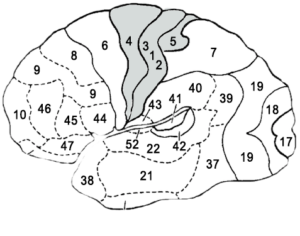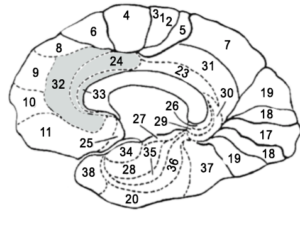Chronic pain
What we can improve
Chronic pain is a continuous pain that persists longer than the normal healing period of an illness or injury, for a period of more than three to six months. For fibromyalgia, it is characterized by pain spread throughout the body that is often associated with fatigue and sleep disorders.
Studies examining the effects of Neurofeedback on chronic pain conditions such as fibromyalgia, trigeminal neuralgia and complex regional pain syndrome type 1 have shown a reduction in the intensity of pain, fatigue, depression and anxiety. Ibric et al (2014) reported that out of 74 patients treated with Neurofeedback for pain caused by chronic illness, injury, surgery or other sources, 68 (92%) reported a significant clinical improvement of their pain after at least 19 Neurofeedback sessions.
A patient in the same study who had been diagnosed with leukemia and colon cancer reported a 50% reduction in their pain, better control of their anxiety and depressive states. In addition, they reported having better sleep and needing less medication used for more than two and a half years after their last Neurofeedback session.
These data are taken from the following article published in 2014 by Lorenzo Cohen, PhD
https://www.researchgate.net/publication/235729302_Neuromodulation_of_Cancer_Pain
- Decreased pain intensity
- Decreased frequency and duration of seizures
- Improved sleep
- Better quality of life
- Increased feeling of well-being
In the clinic, we noticed that the majority of clients perceive a decrease in pain after 5 to 6 sessions of Neurofeedback and will generally continue to do about 20 sessions in total to achieve significant levels of improvement.
Le trouble du déficit de l’attention avec ou sans hyperactivité (TDA/TDAH) est une condition neurodéveloppementale complexe qui toucherait 5 à 8 % des enfants. Il peut être décrit par une panoplie de symptômes liés à des dysfonctions ou à une pauvre maturation des lobes frontaux.

While the main symptom of fibromyalgia is pain, it can be felt in various parts of the body. Patients with this condition usually experience pain when pressure is applied to their muscles or tendons. However, other symptoms are associated with this syndrome:
- constant fatigue,
- sleep disturbances,
- memory and concentration problems,
- headaches and irritability,
- gastrointestinal problems,
- sensitivity to temperature, noise, and sometimes light,
- and stiffness throughout the body.
Patients with fibromyalgia are also prone to depression and anxiety. Furthermore, if you suffer from fibromyalgia, symptoms can worsen when you are under stress. Some studies suggest that pain signals are poorly transmitted to nerve cells in people who suffer from this syndrome. The brain fails to understand the message induced by recurring and sometimes chronic pain.
Although studies have not yet established the causes of fibromyalgia, various factors are linked to the development of the disease. The first is age, as individuals aged 20 to 50 are more likely to suffer from fibromyalgia than other demographics. The second is gender, as research has shown that 90% of patients with this syndrome are women. Next is family history, which may increase the risk of developing the disease. Finally, individuals with a rheumatic disease and those who have been exposed to stress or a traumatic event are likely to be more prone to developing fibromyalgia.
Diagnostic evaluation
A healthcare professional makes the diagnosis of a condition like fibromyalgia. The doctor reviews the patient’s history and performs a physical examination, X-rays, and blood tests. Patients must generally wait nearly five years to receive a precise diagnosis. There is no treatment to cure fibromyalgia. However, with the help of their doctors, patients living with this disease learn to relieve their symptoms. Managing the person’s condition involves engaging in physical activity to reduce pain and sleep disturbances and a therapeutic process to learn to manage pain and associated thoughts-emotions.
At Neuroperforma, we recommend neurofeedback as a treatment. Studies have shown its positive effects on chronic pain caused by fibromyalgia. A high number of sessions (around twenty) can improve sleep quality, as well as better control anxiety, depressive states, and pain intensity.
While medicine has no official treatment to cure fibromyalgia, regular physical exercise proves beneficial. Medication is reserved for patients who have noticed no improvement in their symptoms despite engaging in physical activity. Psychotherapy is also a beneficial approach for people suffering from fibromyalgia.
According to some studies, neurofeedback can reduce the intensity of pain, fatigue, depression, and anxiety in people suffering from fibromyalgia.
Relaxation activities, stress reduction measures, and lifestyle changes are options that can alleviate the symptoms of fibromyalgia and chronic pain.
The best strategy is engaging in physical activity such as aqua or aerobics, as exercise releases endorphins that help alleviate pain.
Fibromyalgia, trigeminal neuralgia, and complex regional pain syndrome type 1 are chronic pains that can be relieved by neurofeedback. It is interesting to note that neurofeedback does not resolve the physical condition but helps reduce pain and other associated factors such as stress and muscle tension.



